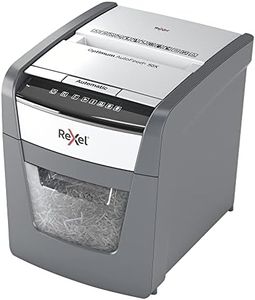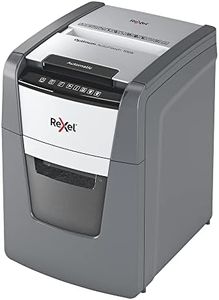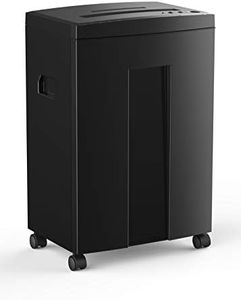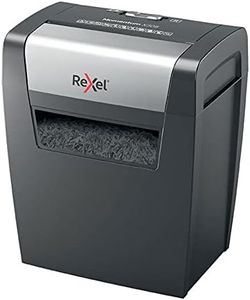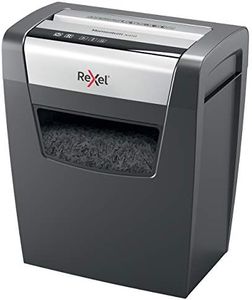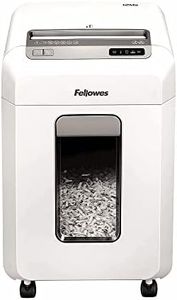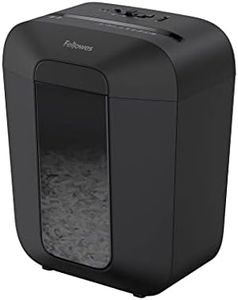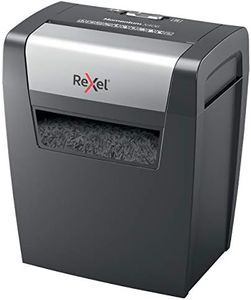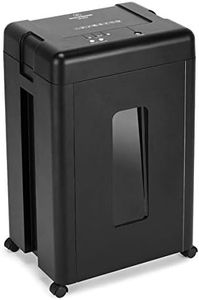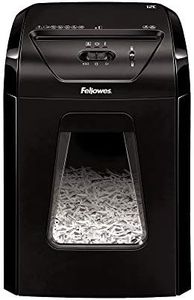We Use CookiesWe use cookies to enhance the security, performance,
functionality and for analytical and promotional activities. By continuing to browse this site you
are agreeing to our privacy policy
10 Best Office Shredders
From leading brands and best sellers available on the web.Buying Guide for the Best Office Shredders
Choosing the right office shredder can make your document disposal both secure and convenient. Start by thinking about how much you shred and the type of material you typically need to destroy. Consider how often you'll use the shredder and how sensitive your documents are. By understanding the various features and specifications, you’ll be better equipped to pick a shredder that’s a great fit for your workspace and security needs.Shred Type (Cut Style)Shred type describes how a shredder cuts paper. The main types are strip-cut, cross-cut, and micro-cut. Strip-cut shredders slice paper into long strips and offer basic security, good for non-confidential documents. Cross-cut shredders chop paper into smaller pieces, making reconstruction harder and offering moderate security for personal and internal office documents. Micro-cut shredders turn paper into tiny particles, providing the highest security for sensitive or confidential information. Think about the sensitivity of your documents; if you're shredding tax or client records, a micro-cut is best, but for junk mail, strip or cross-cut may be sufficient.
Sheet CapacitySheet capacity means how many sheets you can feed into the shredder at once. Entry models may handle around 5-8 sheets, mid-range about 10-15, and heavy-duty can handle 20+ sheets per pass. If your shredding workload is light and infrequent, a lower capacity is fine. For busier offices or frequent shredding tasks, seek higher capacities to save time and reduce jams.
Run Time and Cool Down PeriodRun time is how long a shredder can operate continuously before it needs to cool down. Typical home/office shredders might run for 5-10 minutes, while more robust models can last 20-30 minutes or longer. Cool down time is the required pause after each run cycle. If you only shred occasionally, a short run time is fine. But if you regularly shred large volumes in one go, a longer run time and a shorter cool down are more practical.
Bin Size (Wastebasket Capacity)Bin size refers to how much shredded paper the machine can hold before needing to be emptied. Smaller bins (3-5 gallons) suit light use, while larger bins (6+ gallons) are better for busy workspaces or group usage. If you want fewer interruptions, choose a larger bin size. Consider your available space too, since bigger bins require more room.
Noise LevelNoise level is how loud the shredder operates, often measured in decibels. Quieter shredders are ideal in open office spaces or quiet environments to avoid disturbing others. If you’re in a home or solo office, noise may be less of a concern. To gauge what you need, think about where you’ll use the shredder and how important a quiet workspace is for you or your team.
Safety FeaturesSafety features include things like auto-shutoff sensors, safety locks, or jam-proof technology. These are important in any office, but especially where children or pets might have access to the shredder. Look for features that match your environment—if you’re concerned about accidental injuries or jams, prioritizing safety options may bring peace of mind.
Shred Materials AcceptedDifferent shredders offer varying abilities to destroy not just paper, but also staples, paper clips, credit cards, or CDs/DVDs. If you need to dispose of more than just paper, make sure to choose a shredder that can handle these materials. Check what you typically need to shred, and align the shredder’s capabilities accordingly.

